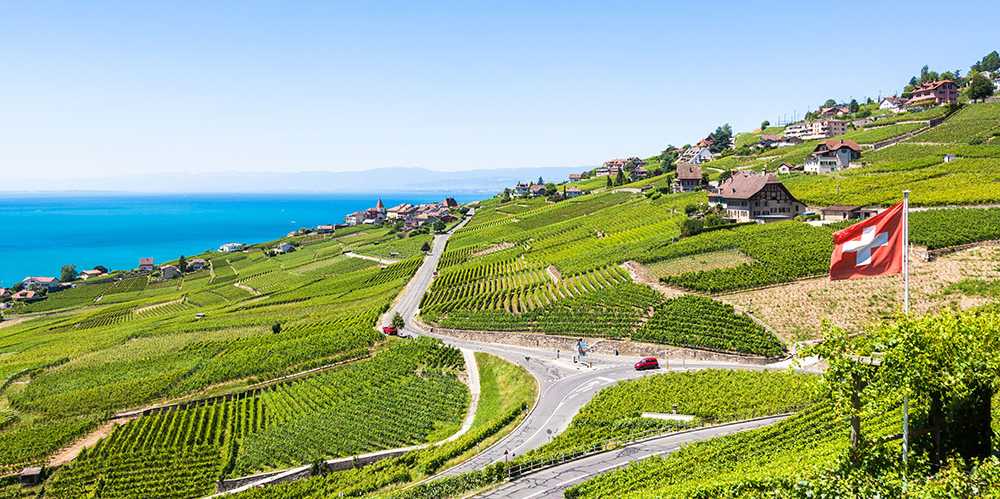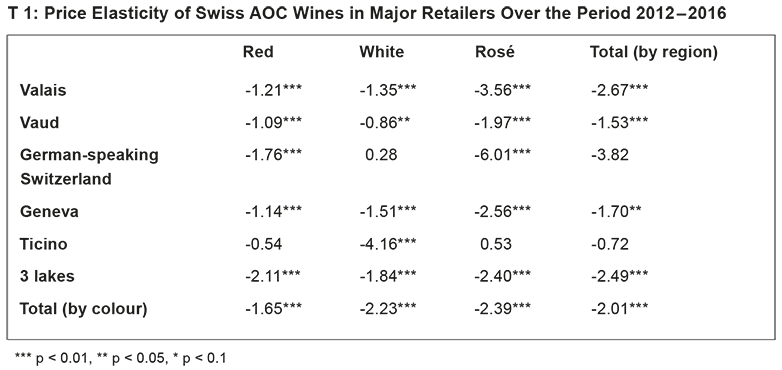Overview of Price Elasticity on the Market for Swiss Wines
- Research Project
- KOF Bulletin
Since 2015, KOF analyses, in cooperation with the Swiss Wine Market Observatory (OSMV), have made it possible to set up a tool for analysing price elasticities on the Swiss wine market. As new results show, rosé wines have, compared to white or red wines, the highest price elasticity in Switzerland. This indicates that consumers should lower their purchases of rosé wine faster when the prices increase.

In order to assess price elasticity for different specifications, the figures have been aggregated according to colour (red, white, rosé) and AOC wine-growing region (Valais, Vaud, German-speaking Switzerland, Geneva, Ticino and three lakes) at monthly intervals over a period of five years (2012-2016). The variables - quantity and average price per litre - have been transformed into natural logarithms in order to be able to estimate price elasticity directly for the coefficients resulting from the econometric model of linear regression.
As shown in the table presenting the analysis (see T 1), the estimate of price elasticity for Swiss AOC wines over a period of five years is -2.01. This figure is consistent with the various previous analyses carried out by the KOF using OSMV data. It would thus appear that, for Swiss AOC wine sold through large retailers, an increase or a fall of 2.01 per cent of consumption in terms of quantity sold (litres) is associated with a fall or an increase of one per cent of the price per litre.
The statistical significance is indicated alongside each coefficient estimated by the following standard p values: highly significant (< 1 per cent), significant (< 5 per cent) and not significant (> 10 per cent). The coefficients “total per colour” and “total per region” have been estimated by panel regression with fixed effects over the types of wines and fixed temporal effects.
Based on the results of a comparison of Swiss AOC wines according to colour, rosé wines (-2.39) appear to have a greater price elasticity than white wines (-2.23) and red wines (-1.65). Among the producer regions, wines from Valais (-2.67) and the three lakes (-2.49) overall have quite a high price elasticity, while price elasticity is average for Vaud (-1.53) and Geneva (-1.70), and not significant for German-speaking Switzerland and Ticino.
The reaction of the market in terms of quantities of red wine sold following a change in price appears to be relatively weak across the producer regions, in contrast to the position for rosé wines where price fluctuations point to the seasonal nature of the product and give rise to a stronger reaction on the part of consumers. There does not appear to be any significant correlation between quantities and prices for red and rosé wines from Ticino and for white wines from German-speaking Switzerland. This is probably due to the high level of heterogeneity among the different labels within these classes of wines.
Over the next stages, the structure of the panel with more than 100 different types of wine will be taken into account, along with other variables such as climate control (temperature), macro-economic (exchange rate) and agricultural (harvest) variables. In order to address endogeneity concerns between quantity and price, other econometric models, such as the instrumental variable model, will be applied to these data. The estimation of price elasticity with causal interpretation (effect of a percentage change in price on the percentage change in quantities sold) could be of major benefit for the Swiss wine-producing sector, in particular with a view to maximising the turnover of the wine-growing industry through the adoption of a suitable pricing policy.
The external page OSMV was established by Changins (Advanced Institute for Viticulture and Oenology in Nyon) on behalf of the Inter-Branch Organisation of Swiss Vines and Wines (IVVS).
Contact
No database information available
